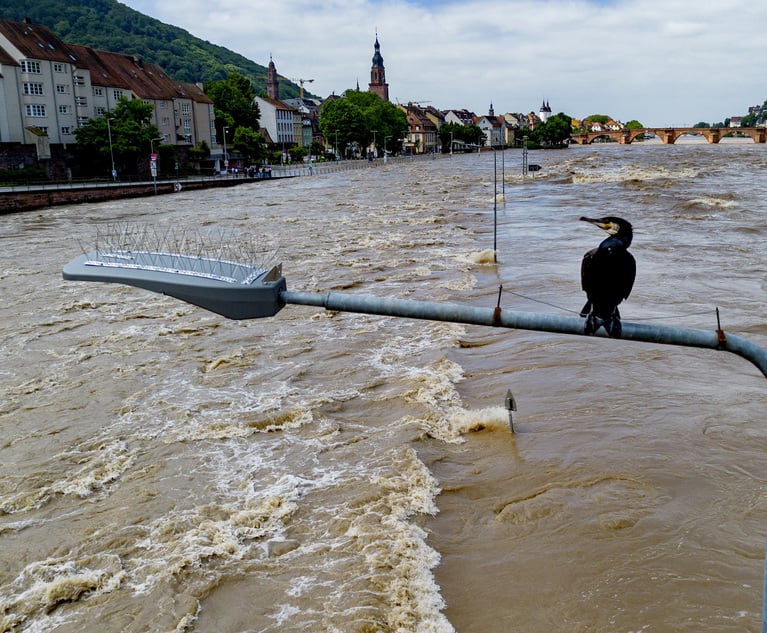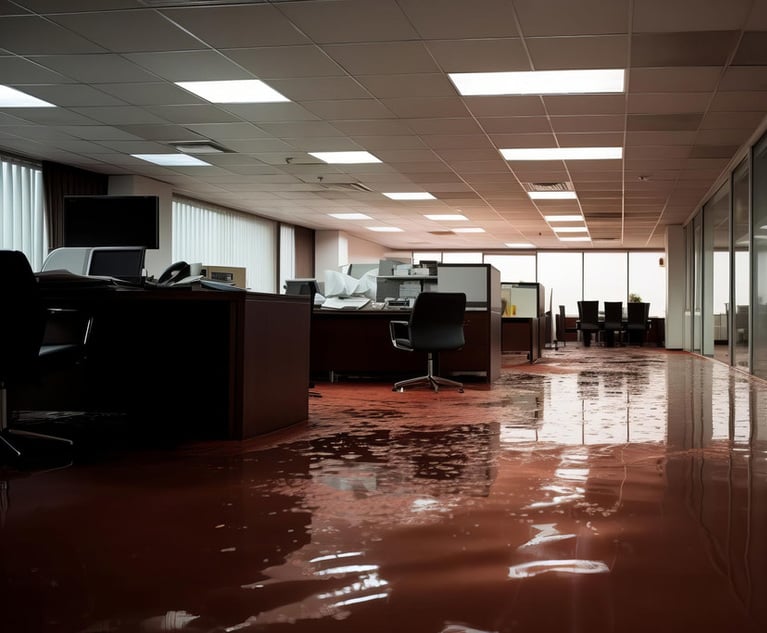A sad fact of life is that, often, we must settle for less thanthe ideal. When it comes to restoration firms, however, neitherinsurers nor insureds should have to lower their standards.
|The ideal restoration firm should fully understand the job fromthe insurance company's perspective and complete the service neededin a cost-efficient manner. Before beginning work, the firm shouldprovide a comprehensive and accurate scope and, when the job isfinished, the customer should be satisfied.
|How can claim professionals identify competent restorationfirms? Let's explore their characteristics, from equipment totraining and everything in between.
|Background Checks
|The background and history of the restoration firm may clarifythe choices restorers make. Companies with cleaning backgrounds mayfocus on restoration and repair, as opposed to the replacement ofmaterials. These firms have studied and understand the cleaning,drying, and restoration of contents and structural items, and aremotivated to apply this knowledge. Their potential weakness may bethat they attempt to clean and restore when it could be morecost-effective to replace damaged materials.
|Restoration firms with construction backgrounds may err byreplacing items that could be cleaned or restored morecost-effectively. The choice to replace, rather than restore,damaged materials may have expensive consequences. In extremecases, firms with replacement mentalities have been described asusing a bulldozer to level a house because of a small kitchen fire.The results may be excellent, but the cost and time involved farexceed the scope of the job.
|As a general rule, it makes sense to attempt restoration on anyitem if the cost for such restoration is less than 50 percent ofreplacement costs. Except in unusual circumstances, such as whenthe item has historical value, replacement may be a better optionif cleaning, repair, or restoration is likely to exceed 50 percentof replacement costs. The competent firm will communicate withinsureds and insurers to determine proper scopes of work.
|Not every restoration firm can handle every restoration job.Some firms specialize in providing emergency services. These havesystems in place to respond to crisis situations around the clock,but they may not be able to handle both emergency and repair work.Many firms offer cleaning and restoration only, and do not offerconstruction-related services. Some of the specialized emergencyskills and services offered include extraction, decontamination,and drying; boarding up and packing out; temporary power and heat;mold remediation; and trauma and crime scene aid.
|Assess Equipment
|Not every company will be able to provide all of these services.Water damage restoration firms will have specialty extractionequipment that is designed for extraction only, and is used inconjunction with truck-mounted or portable extractors.
|It is not uncommon for a professional restoration contractor tohave more than 50 air movers and eight to 10 dehumidifiers ofvarious types. The mix of dehumidifier types should include lowgrain refrigerant dehumidifiers and desiccant dehumidifiers.Frequently, it will have wall and hardwood floor drying tools, aswell. Other essential equipment includes testing instruments, suchas moisture meters (both invasive and non-invasive) andthermo-hygrometers.
|Thermal imaging cameras work well when used in conjunction withmoisture meters, but they are not definitive moisture measurementdevices, as they only detect temperature differences, not water.These cameras have great potential as investigative tools, buttheir use should not define a quality inspection.
|A restoration company should be equipped with a variety ofmoisture detection meters and be skilled in their use. Otherwise,the firm will be unable to verify the structure's return to a drystandard or the efficient use of its equipment.
|The Right Skills
|Using modern drying equipment is only one component of producingacceptable results. The incorporation of good drying science withmodern equipment is necessary. Usually, this is found among trainedand certified technicians and supervisors, and it is a keycomponent of a competent restoration company.
|Look for firms with IICRC (Institute of Inspection Cleaning& Restoration Certification) and ASCR (Association ofSpecialist in Cleaning & Restoration) certifications. The IICRCoffers certification courses in a wide variety of trades includingcleaning, restoration, and inspection. Find professionals who havebeen certified by the IICRC in water damage restoration (WRT) andwith the advanced designation of applied structural drying(ASD).
|IICRC journeyman and master restorers have completed multiplecertifications. Technicians with applied microbial remediationtraining for mold and bacteria control (AMRT and AMRS) will focuson preventing mold problems on water restoration projects. Thesetechnicians also understand the complexities of dealing with sewagecontamination. Certification in carpet cleaning (CCT), upholsterycleaning (UFT), odor control (OCT), and fire restoration (FST)indicates that a firm has a serious interest in performingcompetent restoration practices.
|The Certified Restorer (CR) designation, offered through theASCR, is an advanced designation that requires extensive knowledgeof both fire- and water-damage restoration. The Water LossSpecialist designation (WLS) focuses on developing the restorer'sskills to perform water-damage restoration and structural drying.These advanced designations require years of experience.
|Not everyone who attends certification courses will meet therequirements for certification. Those who pass the examinationprocess must maintain their certifications through continuingeducation. In some programs, the qualifications are expanded andcertified technicians must complete additional education tomaintain their credentials. Both the IICRC and ASCR web sites allowthe verification of contractor certifications.
|Many firms fail to train their front-line employees because ofthe expense involved. Subsequently, it is not uncommon foremployers to gain this training and fail to pass it on to theiremployees. It is reasonable to expect to have at least onecertified technician on the job. Competent firms should be pleasedto provide copies of certifications and designations of theiremployees, and you should feel comfortable requesting to see thisinformation.
|Examine Experience
|For all of the positives of certification, there is littlesubstitute for experience. Experience is the result of refining andpolishing restoration skills on job after job. With any restorationproject, there could be a number of “correct” ways to approach thetask. The most competent restorers will complete a job in the mosteffective way possible while using labor, materials, and equipmentefficiently.
|In some rare situations (as in an historic structure withantique furniture or artwork), drying more slowly may prove to bethe most prudent and responsible restoration choice. In mostsituations, however, drying quickly is the preferred andcost-effective choice. Using more drying equipment frequentlyresults in less damage, lower replacement costs, closing the filemore quickly, and reducing additional living expenses. Anexperienced firm will know how to organize and process the job, andwhich path to take.
|Interpersonal relationship skills are important. The best way todetermine whether a firm performs well in this area is bycontacting your customer, the homeowner. Follow-up after a claimcan reveal a great deal about the professionalism and communicativeabilities of a firm.
|Obtain Documentation
|Documentation is a critical component of successfulcommunication. The restoration firm should provide accurate scopesof work and invoices. The scope should include floor diagrams withmeasurements, and should be easy to understand. Documentationshould include moisture mapping and psychrometric readings thatwill verify the return to original moisture conditions, known asthe dry standard.
|Moisture mapping comes in many forms. One method includes theuse of photographs of walls with a colored-dot system thatindicates the levels of moisture in the affected areas. Colors areused to indicate the degree of water absorption. These dots can bepartially overlaid to indicate drying progress. An example would bered going to yellow and yellow going to green as the jobprogresses.
|Another method is to use an accurate moisture meter and recordthe moisture content on a map or floor plan of the job. Dailyreadings can be recorded and the drying progress can be documented.Regardless of the method, progress should be documented andreported daily.
|Moisture trapped in difficult areas still must be inspected.Failure to do so may result in microbial growth. The well equippedrestorer has specialized equipment to locate this trapped moisture.Moisture conditions can be measured and recorded behind and belowcabinets using insulated probes.
|Moisture mapping also is used to record the moisture content ofsub-flooring. The readings usually are taken at three levels, top,middle, and bottom, and averaged. Measurements can be taken throughcarpets and pads when necessary. Moisture reading in finished woodflooring involves four measurements: top, middle, bottom, andunderlay or sub-flooring.
|It is inappropriate for drying to be declared complete if thestructure and contents have not been documented to show pre-lossmoisture conditions. This is determined through a comparisonbetween unaffected materials and suspect materials. There also aremathematical formulas available that help in calculating themoisture content expected to be found in materials that haveresided in “normal” environments.
|Documentation should demonstrate that the structure and contentshave, indeed, returned to a dry standard. Such documentation mayprotect all parties involved if there are future accusations ofimproper workmanship.
|Psychrometric readings should be taken of the affected areas,unaffected areas, and outdoor conditions. These readings should bepresented with graphics that easily demonstrate drying progress.Various plot points on the graph may indicate interference in thedrying progress, such as equipment that had been shut off by anoccupant or power failures. Some firms will include measurements ofthe humidity entering and leaving their dehumidification equipment.Check to ensure that these readings are expressed in grains perpound (GPP), a critical measurement in verifying that dehumidifiersare, indeed, removing water vapor from the air.
|Finally, documentation should include certificates of completionand satisfaction, and should be signed by the insureds. Competentrestoration companies are not only good at starting the job, theyare good at finishing the job.
|Many competent restoration firms in the restorative dryingindustry are ready to serve your customers when they suffer lossesdue to water. Employing these firms will ensure your customers'satisfaction, properly mitigate loss severity, and dramaticallyshorten the time necessary to close files.
|David Oakes owns and operates a cleaning and restorationfirm. He is a Certified Restorer affiliated with ASCR, and teachesvarious Dri-Eaz courses.
Want to continue reading?
Become a Free PropertyCasualty360 Digital Reader
Your access to unlimited PropertyCasualty360 content isn’t changing.
Once you are an ALM digital member, you’ll receive:
- All PropertyCasualty360.com news coverage, best practices, and in-depth analysis.
- Educational webcasts, resources from industry leaders, and informative newsletters.
- Other award-winning websites including BenefitsPRO.com and ThinkAdvisor.com.
Already have an account? Sign In
© 2024 ALM Global, LLC, All Rights Reserved. Request academic re-use from www.copyright.com. All other uses, submit a request to [email protected]. For more information visit Asset & Logo Licensing.








